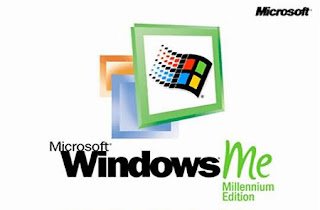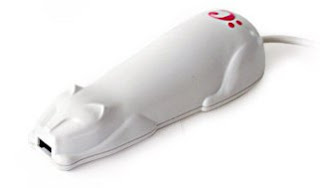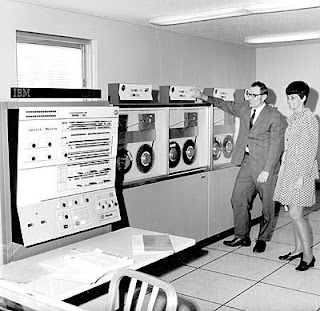 It’s apparently impossible to get the jerks at Vocus Inc. to stop spamming me. My mailbox is filled with messages sent out via their PR spamming service. And now they’re working hard to make sure that you don’t realize that that the spam comes from their company. What a bunch of losers.
It’s apparently impossible to get the jerks at Vocus Inc. to stop spamming me. My mailbox is filled with messages sent out via their PR spamming service. And now they’re working hard to make sure that you don’t realize that that the spam comes from their company. What a bunch of losers.
I’ve been trying to get Vocus to take me out of their database since April 2009, but to no avail. See three previous posts:
4.29.2009: Can we vaporize Vocus with a medical laser? Please?
5.01.2009: It pays to tweet, and questions for Vocus PR
5.01.2009: Tangible suggestions for Vocus PR
Ready for today’s saga? I was going through my trash mailbox, unsubscribing from PR lists that aren’t relevant; it’s something that gets done every so often. I noticed that a tremendous number of press releases (mostly irrelevant and many coming to email addresses that are inappropriate) containing an identically formatted footer:
If you would rather not receive future communications from xxxx, let us know by clicking here.
with xxxx being the name of the company sending out the press release. The link goes to
http://xxxx.pr-optout.com/OptOut.aspx?
What is pr-optout.com, I wondered? Let’s browse over to http://www.pr-optout.com, and see what it says.
PR-optout allows journalists to optout of receiving future press releases sent by a particular company. Within 24 hours of clicking on the optout link at the bottom of the press release, the journalist will be removed from that company’s mailing list.
That’s all it says. Worthless. It doesn’t tell you who is behind it, and how you can get your email address removed from the service entirely (instead of company-by-company). Googling for “pr-optout.com” didn’t help. But a WHOIS search revealed a name that I honestly didn’t expect to see:
Registrant:
Vocus Inc
4296 Forbes Blvd
Lanham, Maryland 20706
United States
Domain Name: PR-OPTOUT.COM
Created on: 21-May-09
Expires on: 21-May-10
Last Updated on: 09-Jun-09
Administrative Contact:
Inc, Vocus
4296 Forbes Blvd
Lanham, Maryland 20706
United States
(301) 459-2590 Fax —
What a scheme! Using this “secret” domain, Vocus can spam you with press releases, and unless you did a WHOIS search, you wouldn’t know that it’s from them!
Back in May, Robin Lane, Director of PR at Vocus, assured me that Vocus would consider my suggestions to add transparency to their system. My suggestions included providing a means for journalists to either opt out of their database entirely, or set up customizable filters to control who can send them press releases. The solution might be to set up a journalist Web portal, or it might merely consist of a more informative footer on Vocus-based emails, telling journalists about their various list-management options.
In fact, in the spirit of cooperation, I offered to help Vocus create such a system. Nothing came of it.
Instead of following through, Vocus added a layer of misdirection. The company, with its new pr-optout.com domain, makes it ever harder for people to get off their stupid spam mailing list. (Some of the email addresses that they’re spamming do not even belong to editorial members of our team. Others are non-journalistic customer-service addresses they’ve apparently harvested from BZ Media’s websites.)
What can you do about it? Nothing, it seems. In May, I was assured me that my addresses would be removed from the Vocus database — yet those same addresses are still receiving tons of Vocus-originated spam. (Robin left Vocus in June.)
If you dig through the company’s website, you’ll find a page describing a so-called “Vocus Journalist Hotline.” The company claims,
If you believe the information in your profile is incorrect or your contact information is out of date, please contact our media research team at email hidden; JavaScript is required and we will be happy to update your profile. We have found that updating a profile is the best way to reduce the volume of off-target PR pitches.
Simply curious about your profile? Call us and we’ll be happy to read your profile to you, or make changes to it so that the pitches you receive are more useful to your writing.
If you have any additional questions, please feel free to contact our Journalist Hotline at 877-402-5262 or via email at email hidden; JavaScript is required.
The company is careful to never offer to take you out of their database. In fact, further down on the page, they say,
In compliance with the law Vocus’ software includes an opt-out mechanism. If you receive irrelevant material you may opt-out of future e-mails from that particular sender. This feature is standard for every client and cannot be disabled.
Removal from that particular sender, yes. From Vocus’s database, no. Based on my past experience with Vocus, you simply can’t get off their list. In the immortal words of Hotel California, “You can check out any time you like, but you can never leave.”
What a bunch of complete and total losers.
Z Trek Copyright (c) Alan Zeichick
 It’s a given that spammers don’t put a lot of effort into filtering their lists to ensure that their marketing messages reach a specific target audience.
It’s a given that spammers don’t put a lot of effort into filtering their lists to ensure that their marketing messages reach a specific target audience.




























